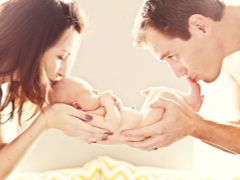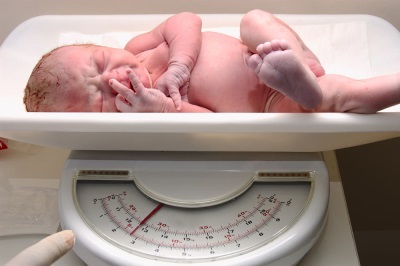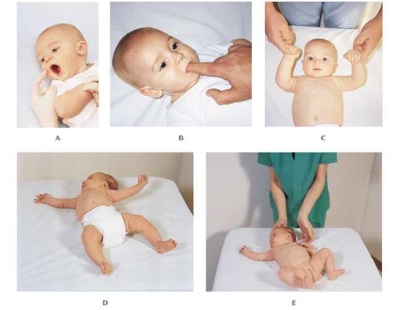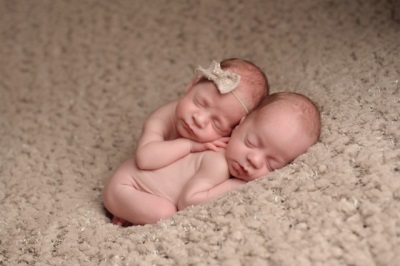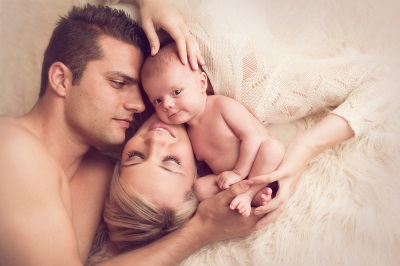The first month of a child’s life
In the first month after birth, the child adapts to a new life outside of her mother's body. This is an important time for the child himself and his parents. Let's look at the main features of the first month of baby life.
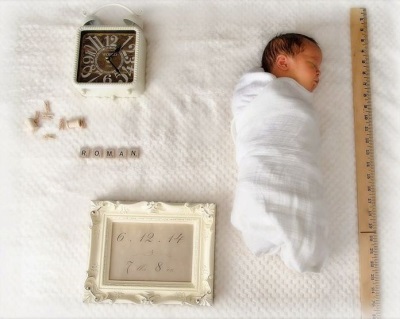
Physiological changes
About, what does a newborn look likeread in another article. In the body crumbs in the first weeks of life there are significant changes:
- Postpartum edema is gone.
- The bones of the skull become stronger.
- The face has certain features.
- Vision changes. Improves eye coordination and focusing of the eye.
- The digestive tract adapts to the new diet and is populated with beneficial microflora.
- Reorganized blood formation and blood circulation. Erythrocytes bearing fetal hemoglobin are destroyed, and instead of them new red blood cells appear.
Urination in a child of the first month of life is quite frequent and happens at least 6 times a day. In this case, the urine excreted crumbs, almost transparent. A baby at the age of 1 month empty the intestines up to 12 times a day (usually immediately after feedings). His chair has a yellow color and a pasty consistency.
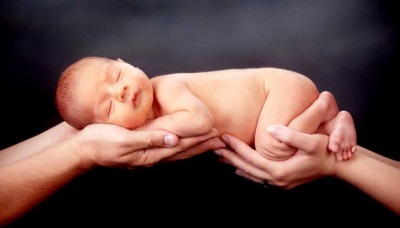
Height and weight
The factors of weight and height of the newborn infant are affected by various factors, ranging from heredity and ending with the health of the crumbs. To determine whether everything is in order with the baby, parents and doctors monthly weigh the baby and measure the length of his body.
In addition to the baby’s body weight and length, the baby’s head circumference and chest circumference are also taken into account.
Indicators of newborn babies are:
The boys | Girls | |
Medium height | 50 cm | 49 cm |
Borders of the growth rate | 46,1-53.7 cm | 45.4-52.9 cm |
Average weight | 3300 g | 3200 g |
Weight limits | 2500-4400 g | 2400-4200 g |
Average head circumference | 34.5 cm | 33.9 cm |
The boundaries of the norm of the head circumference | 31.9-37 cm | 31.5-36.2 cm |
Average chest girth | 34 cm | 34 cm |
Border Norm Limits | 32.3-36.8 cm | 32-36 cm |
How much weight does the baby gain in the first month?
In the first month, the infant gains an average of 600 grams of weight. Note that, normally, in the maternity hospital, the baby loses up to 10% of the weight with which it was born, but before it is discharged, it starts to gain weight back and after that, only the increase in body weight is considered the norm. The growth of the baby for the first month increases by about 3 centimeters.
Indicators of babies at 1 month look like this:
The boys | Girls | |
Medium height | 54.7 cm | 53.7 cm |
Borders of the growth rate | 50.8-58.6 cm | 49.8-57.6 cm |
Average weight | 4500 g | 4200 cm |
Weight limits | 3400-5800 g | 3200-5500 g |
Average head circumference | 37.3 cm | 36.5 cm |
Head limits | 34.9-39.6 cm | 34.2-38.9 cm |
Average chest girth | 36.5 cm | 36.1 cm |
Border Norm Limits | 34.1-38.9 cm | 34-38.1 cm |
Reflexes
The health of a newborn baby is always checked for the presence of reflexes that the baby should have.Many of these reflexes disappear with time, but their presence in the newborn is an important sign of the health of the infant.
A newly born baby is defined by the following reflexes:
- Sucking This is the main reflex that provides nutrition to the baby.
- Prehensile. Having touched the palm of the baby with a finger or a toy, you will see how the grab reflexively grabs it.
- Search. When stroking or touching the cheek, the child turns its head.
- Swimming. Putting the baby on your tummy, you will see that the child makes movements similar to swimming.
- Babinsky. If you hold your finger on the foot of the crumbs (on its outer edge), the foot turns, and the fingers on it spread apart.
- Walk By supporting the body of the crumbs so that their feet touch the sturdy surface, you will notice how the child begins to perform movements similar to walking.
- Mora. With a sudden loud sound, the baby will fold and spread legs and arms.
- Babkina. Press the baby on the palm, and see how the baby opens his mouth and turns his head.
Mode
As such, the child’s first month of life does not have a crumb — he sleeps for a few hours, then stays awake for 30–60 minutes, eats and falls asleep again. A certain mode of the day, individual for each infant, is formed only in the second month of life, and in the neonatal period, the child doesn’t care whether the night is now or the day.
About what you need to do in the first weeks after the birth of the crumbs, see the TV show "Baby Boom".
Sleep
The newborn most of the day is in a dream, while the baby's sleep is represented by three phases:
- Deep sleep, during which the pussy calmly and deeply breathes, and the baby's eyes are closed.
- Shallow sleep, during which the baby's breath is confused, and the legs and arms can twitch, like eyeballs covered with eyelids.
- Drowsiness, which often happens during feedings or during sleep. The eyes of the baby in this phase are half closed.
In the period of wakefulness, the baby can either lie still or report her discomfort by crying.
Nutrition
Food that is considered ideal for a newborn baby is colostrum. So called milk, which is released from the female breast immediately after childbirth and extremely rich in beneficial substances for the crumbs. Breast milk is rightly called the best food for a child who has just been born, because even the best manufacturers of mixes cannot reproduce its unique composition.
It is advised to feed the newborn baby on demand, putting the baby to the chest when the child is anxious. At first there will be a lot of feedings, but as the child grows, the child has his own diet with pauses between feedings.
In situations where breastfeeding is not possible, it is important to choose a suitable mixture of crumbs. To do this, you should consult with the pediatrician and take into account all the nuances so that nutrition does not harm the immature digestive system of the newborn.
When breastfeeding, it is important to ensure that the infant correctly captures the nipple - along with the areola. However, the baby will still swallow some of the air, so after feeding you need to help the crumbs to release the air (burp).

Development
A newborn baby can do very little. During the period of wakefulness, the baby moves her arms and legs chaotically, and to any irritant, be it a wet diaper or a feeling of hunger, the baby reacts with crying. When a child hears a sharp sound, it freezes, often blinks and may burst into tears.
By the end of the first month of life, the baby is able to:
- Smile in response to the speech of an adult.
- Raise your head when lying on your stomach, holding it for up to five seconds.
- Keep track of fixed objects and the face of the mother, as well as moving large objects of bright color.
- To roar. The sounds made by the baby are similar to “gee”, “ha”, “gu”, therefore such a “talk” of the crumbs is also called agukan.
About what happens to the baby in the first month of his life, see in the video of Larisa Sviridova.
What does a child need?
- First of all, the baby after birth needs tactile contact with the mother, so the child should be hugged more often, held in her arms, ironed.
- More often smile to the baby, then the crumb will quickly please you with a conscious smile.
- In order for the child to develop better, in times of wakefulness, talk with the baby and often change the position of the baby - lay it on your tummy, turn it on a flank, wear it vertically, supporting your head.
- For better hearing development, you can not only talk with a baby with different intonation and timbre, but also include a little classical music. Let the child listen to her for about ten minutes daily.
- The correct care of the crumbs, which includes daily hygiene (washing, washing, cleaning the eyes, nose, ears, combing, nailing), bathing, walking, massage, air baths, is also important.
Possible problems
In the neonatal period, there may be such problems:
- Colic. They appear in most babies, as a result of insufficient maturity of the intestine. You can help your baby with a light massage of the abdomen, bodily contact, a vapor tube, or drugs that help get rid of the little ones.
- Poor healing of the umbilical wound. In order for it to pass normally, the navel of a newborn must be treated daily with brilliant green. In cases of appearance of discharge from the wound or redness of the navel of the child should show a doctor. We also need a pediatrician's consultation if the baby is already 2 weeks old, and the crust has not disappeared and the wound has not healed.
- Yellow one This is a physiological condition characteristic of most babies. It is associated with the process of replacing hemoglobin, which was in the baby’s blood during intrauterine life, with normal hemoglobin. Usually it takes place in the first 2 weeks of life crumbs.
- Restless sleep Although the infant of the first month of life sleeps a lot, but because of the peculiarities of his brain’s work, the infant’s sleep is easily disturbed. So you should take care of the optimal conditions for sleeping baby - let the child sleep in a quiet and warm room with dim lights.
About what to do with a newborn baby, see the program "School of Doctor Komarovsky."
